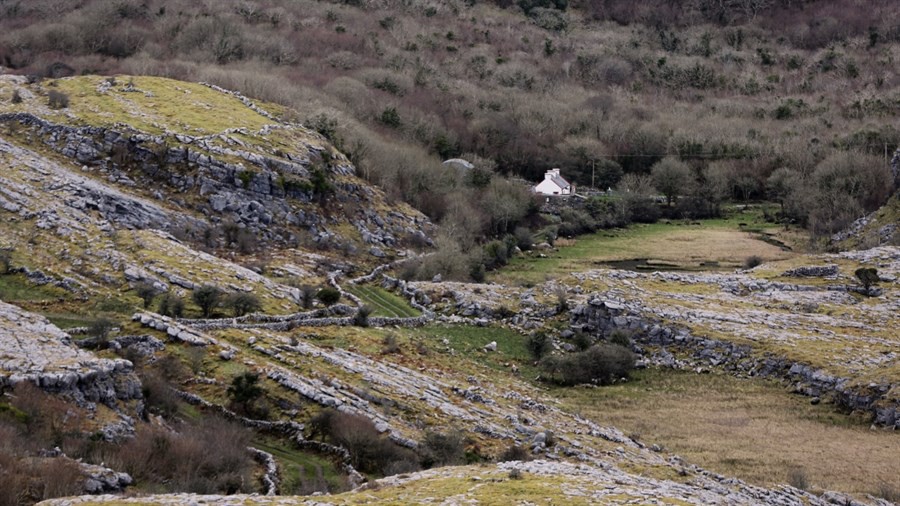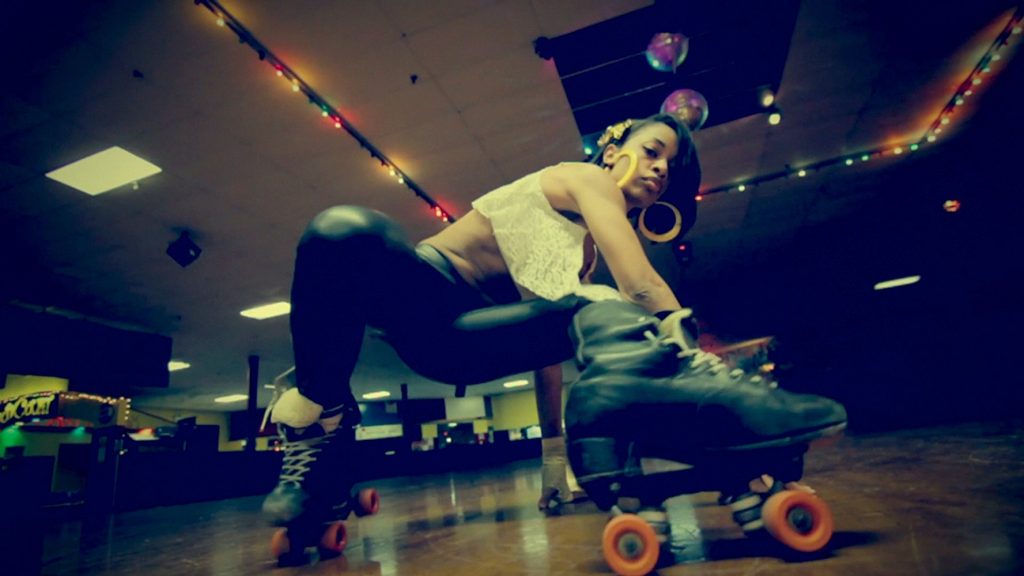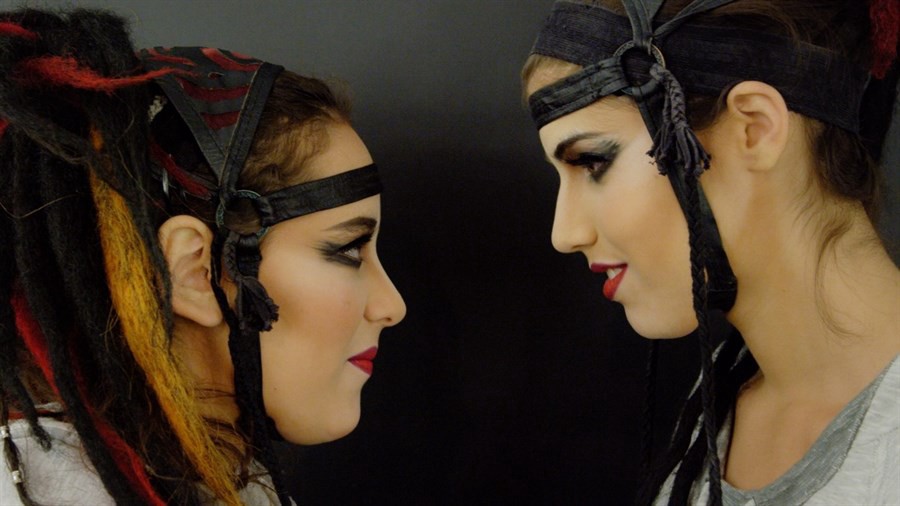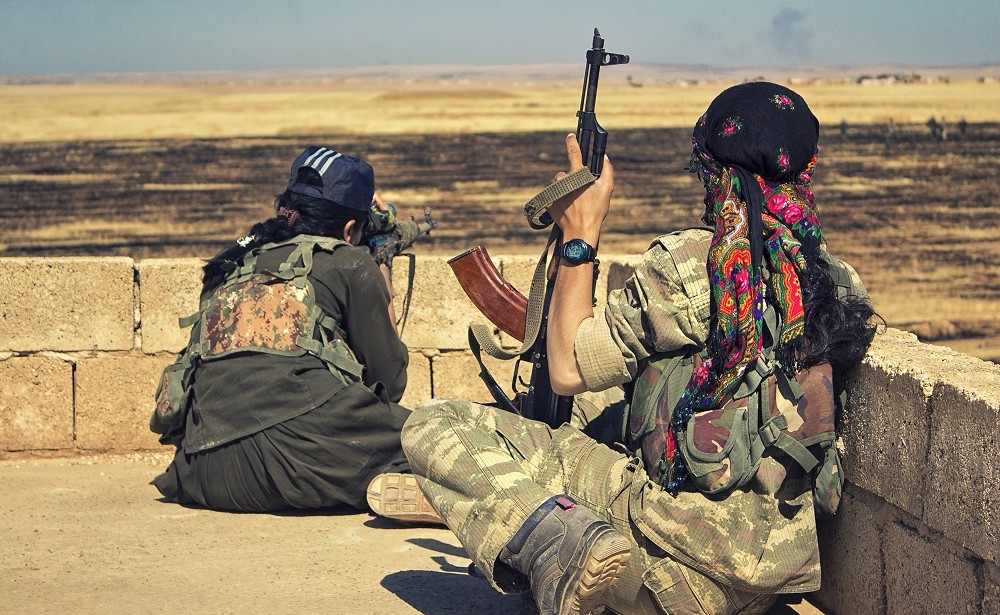Katrina Costello co-founded Sea Fever Productions in 2006 along with her husband, Kevin O’Sullivan. The company is dedicated to producing natural history documentary films in Ireland. “The Silver Branch” is her debut film. In addition to directing, Costello shot and edited the feature.
“The Silver Branch” will premiere at the 2018 Hot Docs Canadian International Documentary Film Festival on May 1.
W&H: Describe the film for us in your own words.
KC: On the face on it, this is a drama documentary about Patrick McCormack, an Irish farmer and poet who farms in Ireland’s most ancient and rugged landscape, the Burren in Western Ireland. As a boy, Patrick left school at 14 years of age and made a promise to himself: to be truly free in the world, to serve the fields, and to honor the story of the ancestor. He lives his life in pace with simple traditional farming — in winter, he tends his cattle in the hail and wind, and in spring he sows his garden of potatoes and vegetables.
Patrick crosses over the fields to help elderly friends and neighbors; they exchange old yarns and anecdotes about the weather. Their laughter is infectious, and an antidote to the problems of our contemporary world. Patrick has always looked in awe of these old bachelor farmers, and their generation; for their complete knowledge of themselves, and the wonderful connection they have with their cows, and their fields. We are privy to this private world, and to the majesty of nature that surrounds them.
Patrick longs to farm in the quiet pace his ancestors did but his life gains a different momentum when he’s called to battle in the Supreme courts to decide on the fate of this iconic wilderness. Patrick’s battle to take on the government to prevent the area from becoming a tourist mecca, and to preserve the wilderness is a universal story.
While Patrick tells us of the difficulties and personal stresses of this period — from financial strain to loss of friendships — we are constantly drawn back to the bigger picture. He wants us to understand why this case was so important as to warrant the sacrifices that came with it.
The film reminds us that there is something greater at risk of being lost — it’s a passionate but subtle plea to be gentle with the earth, and her resources.
“The Silver Branch” has not got the characteristics of a typical conservation doc, but rather it is an ode to nature, and it does stir in us a love for wilderness, and a desire to reconnect and protect our rural agrarian culture and our wildlife.
It is a bittersweet end-of-era evocation, and a story of hope.
W&H: What drew you to this story?
KC: The desire to make this film has grown out of my feelings for the wilderness — the moments of magic on the hills, and my memories of farming with my father in Ireland in the ’60s and ’70s. My childhood days were free and easy, roaming across the fields, tending stock, with a welcome and a yarn in every home in the village. But like 90 percent of people my age at that time, I left Ireland in the ’80s. I wanted to explore and travel. I worked in some of the major stock exchanges, and banking capitals of the world, installing trading room computer software.
This is a long way from filmmaking but contracting allowed me the opportunity to do what I love: to go alone, photographing, and living in far-off reaches, from the mountains of Asia, to the basin of the Amazon. I was especially drawn to rural communities, to the people who live close to the soil or the water. I was — and am — always compelled by the elders, for their stories, their honesty, acceptance, and knowledge of themselves.
Returning to Ireland with my husband in 2000 to start our family, we spent a lot of time rediscovering our countryside and mountains.
There is no limit to your imagination when you sit on a mountain, and I longed to show the world these moments of magic. The wildlife alone is spectacular, but the miles and miles of stone walls, the small fields, and forts, and famine houses — all these remnants of our ancestors were so stimulating to my imagination. I came off the mountain bursting with enthusiasm, and thus began learning how to use a video camera.
The moment I met Patrick, I knew he would be the single voice for a film. He farms close to the earth, and is open and vulnerable to the wonders of nature, to the echo of the ancestors, and like the people of the Burren, he is full of poetry but grounded in practicality. His life, and his relationship with the elders absorbs us into a truly unique and disappearing way of life, one which I yearned to return to, which I wanted my children to experience — but it was vanishing from our culture.
I wanted to give our unique Irish landscape, and the stories of our lost agrarian culture, a place in our modern society. To evoke our connection back to the earth, to allow nature [to] shape us, and most importantly for us to be gentler with nature, before we completely decimate our world.
W&H: What do you want people to think about when they are leaving the theatre?
KC: At a very basic level, I hope that the cinematography, and Patrick’s passion for wildlife rekindles in us a love for nature, that perhaps many of us have become disconnected from. As John Moriarty, the Irish philosopher, said, “we are the generation that [is being] educated out of our landscape.”
I would like people to feel that they will make more time for themselves to be still and watch the majesty of nature unfold in front of them. The smallest and most ordinary experience — be it a bird gathering soft moss for its nest, a dew drop on a spider web — can be most extraordinary if you allow yourself time to contemplate, and be moved by them.
On a deeper level, I hope that Patrick’s intimate introspections — his fears, dreams, challenges, determination, and so forth resonant with people’s own experiences — that not only is he telling us all these stories of his own life, he is telling us the stories of our own.
I hope the audience feel so deeply connected to their story, to their own people and place, that they too would risk everything to put a stop to their ancient culture and landscape from been devastated by the pressure of economics, which is leading us down the path of biodiversity oblivion.
Finally, I hope people feel uplifted, that the powers of the universe, and our own resolve can be so great, that we as individuals can make a difference to the world our children, and our children’s children will inherit.
W&H: What was the biggest challenge in making the film?
KC: Getting funding was the biggest challenge — I had delays and rejections, and it took me three years to get — but perhaps it wasn’t a bad thing. During that time, my camera skills were improving, I got to know the secret places of the Burren, and — as I had no money for childcare — my children had to come with me on shoots. They are peppered all through the film, and they brought nuggets of lightness, wonder, and magic to it. I guess I just made the mother of home movies.
More significantly, Patrick also realized the perseverance and passion that was driving me to make this documentary came from the heart — I guess this established a mutual friendship and trust between us.
It was a challenge — but a fabulous one — to seamlessly interweave all these threads of Patrick’s life: his profound and poetic relationship with our unique and ancient Irish culture, the discipline of boxing, the dramatized recreation scenes, the historical archive with the supreme courts, his family life, and his friendship with these wonderful old farmers, which he eulogizes. It became more apparent as we created the story that the battle to preserve the mountain, Mullaghmore, was the top tier of the story but Patrick’s own relationship with people and place, and his search for unity of being was the heart. It allowed us to create this multi-tiered story, that has universal resonance with people on many deep levels.
The edit was also a challenge — there was all these beautiful, poetic insights which Patrick shared, and I found it difficult to leave them out. At a draft cut, I was disheartened to be told by a comrade, “It was profundity after profundity.” I had to go at it hard with the scissors. Looking back on it, as I shot, directed, and edited it, I was too close, and too intimate with the material; I was too precious with the beautiful wildlife scenes, and the poetry, and found it difficult to kill my babies.
W&H: How did you get your film funded? Share some insights into how you got the film made.
KC: We were lucky to meet Rory Gilmartin of the Irish Film Board who saw the promo and said, “I’m hooked.” It was sweet music to my ear! But he had many reservations. We settled that he’d give us development money to create a promo which blended all these various threads of the story together.
Six months later, Rory committed to fund us the production loan, approximately 50 percent of the film costs. The hardest thing was to get, and align, all the other funding.
Our Irish broadcast stations thought “The Silver Branch” was too creative for TV, and they refused us. We thought we were on the brink of losing the IFB’s 50 percent when a small regional TV station, Irish TV, said they’d broadcast it. Unfortunately, [the station] folded.
[After a lot of time and effort] we offered the completed, finished film free of charge to the acquisition departments in RTE 1 and 2, TV3, UTV Northern Ireland — all they needed to do was agree to broadcasting it. They declined. Fortunately, we chased down a wonderful lady, who runs a small community TV Station, called Dublin TV, and she rescued us, and will broadcast the film on their station next year.
We also qualified for the tax incentive for the Irish Film Industry.
W&H: What does it mean for you to have your film play at Hot Docs?
KC: After all that — all those refusals — can you just imagine what this recognition means to us? I’m over the moon, thrilled, excited, and humbled. Not only is it a gratifying acknowledgement of its worthiness in film but it means people will see it, and hopefully it will leave something positive out in the world.
It is an incredible opportunity to network and meet other filmmakers and people within the industry community.
W&H: What’s the best and worst advice you’ve received?
KC: Best advice: “Never give up — fortune favors the brave.”
Worst advice : I can’t remember. Obviously it fell on deaf ears.
W&H: What advice do you have for other female directors?
KC: There are many ways to tell the same story — but it’s what you want people to feel when they watch your movie that counts more than anything else. I don’t think anybody else sees it exactly as you do, which is why it’s important to stick to your personal vision of how things should unfold in the film — it’s your voice, and your dream which will make it work, which is probably the summation of everything that you’ve felt, and thought, and experienced in your own life’s story.
If you need help, ask, listen, and then take only the little bits that you feel is right.
W&H: Name your favourite woman-directed film and why.
KC: “Suffragette,” directed by Sarah Gavron. Emily Wilding Davison’s bravery was extraordinary — which demonstrates the strength of personal will. Despite all the odds, being force-fed regularly and brutally, and endless dangerous sacrifices including separations from their children, Wildling and other suffragettes never gave up. A single voice can spark people to act to make the whole world a better place.
The execution of the film made their troubles feel immediate and real in my opinion — it was heart-warming, sad, inspirational.
I have three daughters — what a fantastic celebration of women’s strength and inspiration to pass on to them.
W&H: Hollywood and the global film industry are in the midst of undergoing a major transformation. Many women — and some men — in the industry are speaking publicly about their experiences being assaulted and harassed. What are your thoughts on the #TimesUp movement and the push for equality in the film business?
KC: A hundred years after Emily Wilding Davison died, votes for women are long since won in most countries, but the feminist revolution continues. I have no personal story of harassment or abuse, and I worked in male environments all my life, but the stories which are being revealed are outrageous on so many levels. Power breeds greed and always has, but I was naive enough to think that sexual harassment from “the boss” was no longer a first world problem. Where is the moral compass of these offenders?
Moving forward, I hope that it does not swing a complete 180 degrees, where women turn excessively slanderous and abusive against all men but rather we strive for equality between men and women.







